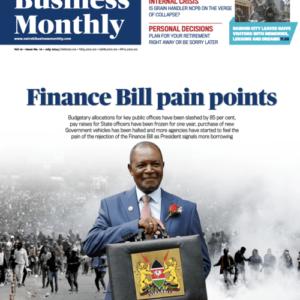BY VICTOR ADAR
After the historic milestone by Kenya Airways to launch direct flights from Nairobi to the United States, ten American horticulture and flower buyers from Miami for the first time participated in the 7th edition of the International Flower Trade Exhibition (IFTEX) in Nairobi in early June in a drive that’s expected to position the country as the Africa horticulture hub.
Although the event also marked the launch of the Fresh Produce Africa, the first horticulture show modelled along the global Fruit Logistica in Germany as the industry works to position Kenya as the continental horticultural hub, how to make flower business successful took centre stage.
Download Nairobi Business Monthly Latest Edition
According to CEO of Kenya Flower Council (KFC), Clement Tulezi, buyers from the US were mainly encouraged by introduction of direct flights between Kenya.
“Flying to US is going to open the market. What we need to do now is to start exporting products across, a case where a super market in Hong Kong can link directly with a farmer in Kenya. Within eight hours of flying, we have a market of 8 billion people out there. Kenyan horticulture products are very safe… Apart from flowers, look at avocados, vegetables and fruits, I think its good a opportunity to start selling out and shorten supply chain,” said Tulezi.
Pointing out that direct market is becoming more attractive, Mr Tulezi added, “You don’t really get good deals from auctions. Direct export is also part of diversifying your markets… The industry is self-regulated, and we have a standard that all flower growers conform to. The growth we’ve seen of late is because of structures we’ve put in place.”
The chief executive of Kenya Flower Council said that the last 15 years the sector has been on the growth with 100,000 people are employed by the industry directly. In terms of performance, what the people abreast with the industry see happening is what Tulezi calls “bringing back markets to the source”.
Speaking during the same forum, Zakayo Magara, CEO AFFA-HCD (agriculture, Fisheries and Food Authority – Horticultural Crops Directorate) said that currently, three million people are employed by Agricultural sector, positioning Kenya as an agriculture hub in Africa. Despite competition from Ethiopia, and an emerging country like Rwanda (exported about 1.2 million) the market is still big. This year Kenya is expected to hit 2.2 million in terms of export
“That’s like double,” Magara said. “The Kenyan flower can compete. What makes us unique is that we can plant flowers year round. We can be consistent suppliers… our flowers are not second rated but even better than what our competitors may be supplying. We are looking for bigger opportunities in future.”
While discussing landmark trends and insights, Mr Magara also touched not only on the growing interest in Kenyan horticulture from American buyers but also the adverse effects of the heavy rains experienced a couple of months ago on the industry which will affect this year’s sector outlook big time.
With the rains the industry has benefited a lot. There’s expansion within firms, the industry is attracting new investors, and small players showing interest. Government should support us by providing firm inputs and equipment, or some rebate so that we are able to grow the industry. Magara said; “Apart from supplying Kenyan products to European Union markets, Eastern Europe, Asia and Middle East we are now looking at opening new markets. Looking to go east – China, Hong Kong, India.”
In terms of local consumption, experts said that they are seeing an emergence of middle class with different appreciation of flowers now investing in it. It’s no longer a luxury. Mr Magara said they have started associating with local flower vendors and that they are currently working closely with Nairobi County so that they (vendors) can trade without being harassed.
Earnings volumes of the market have increased. In 2014 the export figures stood at 84 billion, and 115 billion in 2017 with the number of companies delving into horticultural products increasing from 284 in 2014 to 386 in 2017.
Mr Tulezi said that what gives Kenya access to markets is the numbers. “The more we are the better for us. We are expanding into new emerging markets, and already traditional market is doing well. What has made us competitive is the fact that we have had to work with industry players,” he said



